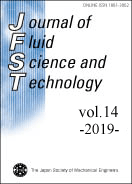
Journal of Fluid Science and Technology
Scope & Guideline
Transforming Mechanical Engineering Through Fluid Insights
Introduction
Aims and Scopes
- Fluid Dynamics and Hydrodynamics:
The journal publishes research on the fundamental principles of fluid dynamics, including flow behavior, turbulence, and boundary layer analysis, contributing to the understanding of complex fluid systems. - Numerical Simulations and Computational Fluid Dynamics (CFD):
A significant focus is placed on numerical methods for simulating fluid flows, utilizing advanced computational techniques such as CFD, Lattice Boltzmann methods, and machine learning approaches to solve intricate fluid problems. - Experimental Fluid Mechanics:
The journal emphasizes experimental investigations of fluid phenomena, including flow visualization, measurement techniques, and the study of fluid interactions with solid structures. - Multiphase and Complex Fluids:
Research on multiphase flows, non-Newtonian fluids, and their rheological properties is a core area, highlighting the complexities of fluid behavior in various applications. - Aerospace and Energy Applications:
The journal covers applications of fluid dynamics in aerodynamics, renewable energy technologies, and thermal management systems, addressing both fundamental research and practical engineering challenges.
Trending and Emerging
- Machine Learning and AI in Fluid Dynamics:
There is a growing trend in applying machine learning techniques to fluid dynamics, particularly for predictive modeling, optimization, and real-time data analysis, showcasing the integration of AI with traditional fluid mechanics. - Sustainable and Green Technologies:
Research focusing on environmentally friendly fluid technologies, such as carbon capture and renewable energy solutions, is on the rise, reflecting global trends toward sustainability and energy efficiency. - Biofluid Mechanics and Biomechanics:
An increasing number of studies are dedicated to understanding fluid dynamics in biological systems, including the mechanics of blood flow and the aerodynamics of insect flight, emphasizing the relevance of fluid dynamics in biological contexts. - Complex Fluid Systems:
There is an emerging interest in the study of complex fluids, including granular materials and colloidal suspensions, reflecting a broader understanding of fluid behavior under various conditions. - Advanced Materials and Fluid Interactions:
Research investigating the interactions between fluids and advanced materials, including superhydrophobic and smart surfaces, is gaining traction, indicating a multidisciplinary approach to solving fluid-related challenges.
Declining or Waning
- Classical Aerodynamics:
Research on traditional aerodynamic principles and fixed-wing aircraft has seen a reduction, as interest shifts toward more complex and innovative aerodynamic studies involving bio-inspired designs and novel geometries. - Static Fluid Mechanics:
Studies focusing on static fluid phenomena, such as hydrostatics or basic fluid statics, have diminished in favor of dynamic and time-dependent fluid behavior, indicating a trend toward more applied fluid dynamics. - Traditional Measurement Techniques:
The use of conventional measurement techniques for flow analysis is decreasing, with researchers favoring advanced methods like digital image correlation and laser diagnostics, which provide greater accuracy and insights.
Similar Journals
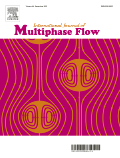
INTERNATIONAL JOURNAL OF MULTIPHASE FLOW
Connecting Scholars in Multiphase Flow ScienceINTERNATIONAL JOURNAL OF MULTIPHASE FLOW, published by Pergamon-Elsevier Science Ltd, is a premier platform dedicated to the dissemination of cutting-edge research in the field of multiphase flow. With an impressive impact factor and ranking in the Q1 category across various disciplines including Fluid Flow and Transfer Processes, Mechanical Engineering, and Physics and Astronomy, this journal serves as a crucial resource for researchers and professionals aiming to advance knowledge and applications in fluid dynamics. Since its inception in 1973, the journal has established a distinguished legacy, providing a venue for high-quality research articles, comprehensive reviews, and technical notes that push the boundaries of current understanding. Although it does not offer Open Access options, its rigorous peer-review process ensures that only the most relevant and significant contributions are published, making it a vital source for students and experts alike striving for excellence in their fields. The journal is based in Kidlington, Oxford, United Kingdom, and continues to be a pivotal part of scholarly discourse in multiphase flow research.

Journal of Nanofluids
Advancing Knowledge in the World of NanofluidsJournal of Nanofluids, published by AMER SCIENTIFIC PUBLISHERS, is a leading international journal dedicated to the burgeoning field of nanofluid technology which bridges the areas of fluid dynamics and nanotechnology. With an ISSN of 2169-432X and E-ISSN of 2169-4338, this journal has established itself as a valuable resource for researchers and professionals in Mechanical Engineering and Chemical Engineering, particularly in the domains of fluid flow and transfer processes. Its prestigious standing is reflected in the 2023 Scopus rankings, positioning it in the 79th percentile for Mechanical Engineering and the 78th percentile for Fluid Flow and Transfer Processes. Although coverage has been discontinued in Scopus since 2021, the journal maintains a Q2 category ranking in both relevant fields, emphasizing its commitment to high-quality and impactful research dissemination. This journal aims to foster innovation and collaboration among scientists and engineers worldwide, providing a platform for groundbreaking research, reviews, and discussions on nanofluids, their properties, and applications. As an essential addition to the library of any researcher or student vested in advanced fluid dynamics, the Journal of Nanofluids serves as a pivotal conduit for advancing knowledge and technology in this exciting and evolving field.

MECCANICA
Exploring the Frontiers of Condensed Matter and MechanicsMECCANICA, an esteemed journal published by Springer, stands at the forefront of research in the fields of Condensed Matter Physics, Mechanical Engineering, and Mechanics of Materials. Established in 1966 and continuing through 2024, this journal provides a robust platform for the dissemination of innovative research and advancements in these increasingly interconnected domains. With an impressive 2023 ranking placing it in the Q2 category across multiple fields, MECCANICA boasts a Scopus rank of #198 in Mechanical Engineering, #150 in Condensed Matter Physics, and #141 in Mechanics of Materials, highlighting its significance and influence within the scholarly community. The journal aims to foster dialogue among researchers, professionals, and students, facilitating the exchange of cutting-edge ideas and methodologies crucial for overcoming contemporary engineering and physics challenges. Readers can access a wealth of knowledge through its comprehensive articles, and while it does not currently offer open access, the journal remains instrumental in shaping the future of engineering and physical sciences.
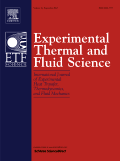
EXPERIMENTAL THERMAL AND FLUID SCIENCE
Innovating the future of engineering through experimental research.EXPERIMENTAL THERMAL AND FLUID SCIENCE is a prestigious academic journal published by Elsevier Science Inc, dedicated to advancing the fields of thermal and fluid sciences. With a strong focus on innovative experimental research, it plays a crucial role in disseminating new knowledge and techniques across multiple domains, including Aerospace Engineering, Chemical Engineering, Fluid Flow and Transfer Processes, Mechanical Engineering, and Nuclear Engineering. Holding a notable impact factor and ranking in the Q1 quartile across these categories since 2023, the journal is recognized for its high-quality contributions, which appeal to a diverse audience of researchers, industry professionals, and students alike. Additionally, with dedicated coverage from its inception in 1988 to projections extending through 2025, EXPERIMENTAL THERMAL AND FLUID SCIENCE provides a vital platform for sharing advancements in experimental techniques and findings that shape the future of engineering and applied sciences.
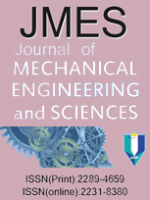
Journal of Mechanical Engineering and Sciences
Pioneering Insights in Industrial and Manufacturing EngineeringThe Journal of Mechanical Engineering and Sciences (ISSN: 2289-4659, E-ISSN: 2231-8380), published by UNIV MALAYSIA PAHANG, is a prominent open access journal established in 2011, dedicated to advancing the field of mechanical engineering and associated sciences. Covering a wide array of topics from industrial manufacturing processes to computational mechanics, the journal serves as a vital platform for researchers, professionals, and students to disseminate innovative findings and methodologies. With impressive Scopus rankings, including a place in the 60th percentile for Industrial and Manufacturing Engineering, the journal holds a significant position among its peers, facilitating global academic discourse. Located in Kuantan, Pahang, Malaysia, the journal emphasizes accessibility and collaboration within the engineering community, encouraging submissions that contribute to both theoretical and applied aspects of mechanical engineering.
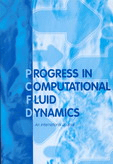
PROGRESS IN COMPUTATIONAL FLUID DYNAMICS
Bridging Theory and Application in Computational Fluid DynamicsPROGRESS IN COMPUTATIONAL FLUID DYNAMICS, published by InderScience Enterprises Ltd, is a vital journal in the realms of Computer Science Applications and Condensed Matter Physics. Established in 2001, this journal serves as a platform for disseminating innovative research findings and technological advancements in computational fluid dynamics, targeting both theoretical and applied aspects. With a current impact factor positioning it in the Q4 quartile for its fields, it captures a wide array of topics including numerical methods, simulation techniques, and real-world fluid dynamics applications, fostering dialogue among researchers, practitioners, and educators alike. Although it does not provide Open Access options, it remains an important resource for those investigating fluid dynamics phenomena. As it continues to evolve through 2024, PROGRESS IN COMPUTATIONAL FLUID DYNAMICS is positioned to contribute significantly to the scientific community, addressing core challenges while promoting collaboration and knowledge exchange.

JOURNAL OF ENHANCED HEAT TRANSFER
Pioneering Insights in Heat Transfer TechnologyThe JOURNAL OF ENHANCED HEAT TRANSFER, published by BEGELL HOUSE INC, is a prominent resource for researchers and professionals in the fields of mechanical engineering, fluid flow and transfer processes, and condensed matter physics. With a history spanning from 1993 to 2024, this journal offers a platform for disseminating cutting-edge research and innovations that enhance our understanding of heat transfer phenomena. Although it operates under a traditional subscription model, its impressive standing is underscored by its Scopus rankings—positioned within the 59th percentile for Mechanical Engineering and 58th percentile for Fluid Flow and Transfer Processes. Additionally, it holds Q2 and Q3 categorizations in relevant fields, reflecting its importance in advancing knowledge and applications in heat transfer technology. This journal effectively bridges the gap between theoretical insights and practical solutions, making it an indispensable tool for academics, industrial practitioners, and students eager to explore advancements in thermal management and efficiency.

ATOMIZATION AND SPRAYS
Innovating the Future of Spray TechnologiesATOMIZATION AND SPRAYS, published by BEGELL HOUSE INC, stands at the forefront of research in the dynamic field of chemical engineering, particularly focusing on the intricate processes of atomization and the mechanics of droplet dynamics. Established in 1996, this prestigious journal aims to disseminate innovative findings and methodologies that drive advancements in applications ranging from spray technologies in industrial processes to environmental technology and energy conversion systems. With a current Impact Factor that reflects its significance within the community—ranked in the Q3 quartile—it serves as a comprehensive resource for researchers, professionals, and students eager to deepen their understanding of fluid mechanics and spray applications. Though not an open-access publication, it provides critical insights and a platform for scholarly communication and exchange in its converged years, fostering collaboration and innovation within the domain.

INTERNATIONAL JOURNAL OF HEAT AND FLUID FLOW
Contributing to Excellence in Mechanical Engineering ResearchFounded in 1979, the INTERNATIONAL JOURNAL OF HEAT AND FLUID FLOW is a premier publication in the fields of mechanical engineering, fluid dynamics, and heat transfer, published by Elsevier Science Inc. With an impressive impact factor and ranking in the Q1 category for Mechanical Engineering and Q2 for Condensed Matter Physics and Fluid Flow and Transfer Processes, this journal is highly regarded for its rigorous peer-reviewed articles that contribute significantly to the advancement of knowledge in these critical areas. Researchers, professionals, and students can access cutting-edge studies that explore the intricacies of thermal and fluid systems, ensuring they stay at the forefront of scientific exploration. The Scopus rankings further affirm its role as a leading source of impactful research, with significant placements in crucial academic categories. Join an active community of scholars committed to innovation and excellence in the exploration of heat and fluid flow phenomena.

Experimental and Computational Multiphase Flow
Fostering Interdisciplinary Insights in Multiphase ResearchExperimental and Computational Multiphase Flow, published by SpringerNature, is a prestigious academic journal that critically examines advancements in the field of fluid dynamics, with a specialized focus on multiphase flow phenomena. Since its inception in 2019, the journal has established a remarkable reputation, attaining Q1 status in Fluid Flow and Transfer Processes as well as Mechanical Engineering according to the 2023 category quartiles, reflecting its high impact and relevance in these domains. With Scopus rankings placing it among the top 15 journals in both Chemical Engineering and Nuclear Energy and Engineering, Experimental and Computational Multiphase Flow is an essential resource for researchers, professionals, and students engaged in cutting-edge studies and applications. Although it operates on a subscription model, the journal remains dedicated to disseminating high-quality research and fostering a deeper understanding of complex fluid interactions across various scientific disciplines. By prioritizing innovative methodologies and interdisciplinary collaborations, the journal aims to significantly contribute to the ongoing evolution of multiphase flow research, recognizing its critical importance in engineering and energy sectors.